
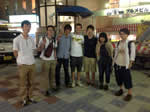
2011 Reverse NanoJapan participant Shota Ushiba and Jordan Hoyt (NJ 2013) were named first and second authors respectively on an article recently published in the Journal of Nanomaterials that includes research conducted in the LaSIE Lab at Osaka University through the NanoJapan: IREU Program.. The article highlights research that studies the alignment of single-wall carbon nanotubes (SWCNTs) in bubble imprints through polarized Raman microscopy.
Ushiba, S., Hoyt, J., Masui, K., Kono, J., Kawata, S. and Shoji, S. “Macroscopic Ensembles of Aligned Carbon Nanotubes in Bubble Imprints Studied by Polarized Raman Microscopy”, Journal of Nanomaterials, (2014). doi:10.1155/2014/632501 ![]()
 Four NanoJapan 2014 students were selected as recipients of poster prizes at the 28th Annual Rice Quantum Institute Summer Research Colloquium. These students were recognized for their presentation skills, knowledge of their research project, and understanding of the future impact/next steps of their research. >> Read More
Four NanoJapan 2014 students were selected as recipients of poster prizes at the 28th Annual Rice Quantum Institute Summer Research Colloquium. These students were recognized for their presentation skills, knowledge of their research project, and understanding of the future impact/next steps of their research. >> Read More
Kuraray Award ($500): Nicole Moody (Rice University), who conducted research in Prof. Tonouchi's lab at Osaka University, for “Terahertz Spectroscopy of Graphene: Examining the Substrate and Temperature Dependence of Optical Conductivity." ![]()
BASF Award ($250): Benjamin Wang (Rice University), who conducted research in Prof. Maruyama's lab at the University of Tokyo, for “Direct Growth of Sub-nanometer-Diameter Single-Wall Carbon Nanotube Films on Si/SiO2 Substrates by Alcohol Catalytic Chemical Vapor Deposition.” ![]()
National Instruments Award of LabView Student License: Skylar Deckoff-Jones (Tulane University), who conducted research in Prof. Dani's lab at the Okinawa Institute of Science & Technology Graduate University, for “Construction and Calibration of Compact Optical Pump Terahertz Probe Spectrometer. ![]()
National Instruments Award of LabView Student License: Lisa Chiba (Rice University), who conducted research in Prof. Kawata's lab at Osaka University, for “Deep Ultraviolet Excitation of Fluorescent Proteins for Multi-Color Imaging.” ![]()

MIka Tabata (NJ 2012) was named third author on a manuscript that includes research she did in the Tonouchi Lab at Osaka Universityas a participant in the NanoJapan Program focusing on graphene. Graphene may be tough, but those who handle it had better be tender. The environment surrounding the atom-thick carbon material can influence its electronic performance, according to researchers at Rice and Osaka universities who have come up with a simple way to spot contaminants. Because it’s so easy to accidently introduce impurities into graphene, labs led by physicists Junichiro Kono of Rice and Masayoshi Tonouchi of Osaka’s Institute of Laser Engineering discovered a way to detect and identify out-of-place molecules on its surface through terahertz spectroscopy. They expect the finding to be important to manufacturers considering the use of graphene in electronic devices. The research was published this week by Nature’s open-access online journal Scientific Reports. It was made possible by the Rice-based NanoJapan program, through which American undergraduates conduct summer research internships in Japanese labs. >> Read more
Y. Sano, I. Kawayama, M. Tabata, K. A. Salek, H. Murakami, M. Wang, R. Vajtai, P. M. Ajayan, J. Kono & M. Tonouchi, “Imaging molecular adsorption and desorption dynamics on graphene using terahertz emission spectroscopy”, Scientific Reports, 4, 6056 (2014). doi:10.1038/srep06046 ![]()
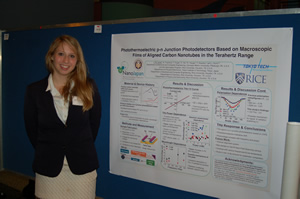
Meagan Lloyd (NJ 2013) was named third author on a manuscript that includes research she did in the Kawano Lab at Tokyo Institute of Technology as a participant in the NanoJapan Program. Researchers at Rice University, Sandia National Laboratories and the Tokyo Institute of Technology have developed novel terahertz detectors based on carbon nanotubes that could improve medical imaging, airport passenger screening, food inspection and other applications. Unlike current terahertz detectors, the devices are flexible, sensitive to polarization and broad bandwidth and feature large detection areas. They operate at room temperature without requiring any power. The project led by Rice physicist Junichiro Kono and Sandia scientist François Léonard takes advantage of the terahertz range of the electromagnetic spectrum. The project’s contributors included researchers taking part in NanoJapan, a 12-week summer program that enables freshman and sophomore physics and engineering students from U.S. universities to complete nanoscience research internships in Japan. NanoJapan is funded by the National Science Foundation through the TeraNano collaboration based at Rice and Tokyo Tech. Such research collaborations and international outreach are among Rice’s Priorities for the New Century. “A hallmark of this international research collaboration is the emphasis it places on training the next generation of terahertz nanoscience researchers,” Kono said. “NanoJapan tightly integrates the international experience with students’ academic programs by providing hands-on opportunities to acquire technical skills and knowledge associated with cutting-edge nanoscience and optics research projects.” >> Read More
Rice University and the University of Tokyo, a TeraNano PIRE research collaborating institution and host institution for the NanoJapan: IREU Program, plan to collaborate on research initiatives and exchange students with an agreement signed on April 1 at Rice. Rice President David Leebron and Tokyo Executive Vice President Yoichiro Matsumoto finalized the agreement April 1 at Rice. The universities plan to exchange undergraduate and graduate students, as well as research initiatives, for at least the next five years. “We’re very pleased to have an opportunity to build a deep and wide collaboration with one of the premier universities in the world, the University of Tokyo,” Leebron said. “We have a long relationship with the university, and I’m very happy to see Rice take another step in deepening this relationship. Expanding Rice’s international outreach remains an ongoing priority for our university.” “For many years we have been hoping for an MOU with Rice University,” Matsumoto said, noting connections that include carbon nanotube research by Professor Shigeo Maruyama of Tokyo’s Department of Mechanical Engineering with Rice Nobel Laureate Richard Smalley since the early 1990s.
At the ceremony were: standing, from left, Sonny Lim, Rice special assistant for International Collaborations; Junichiro Kono, a Rice professor of electrical and computer engineering and of physics and astronomyand PI of the TeraNano PIRE/NanoJapan Program,; Consul-General of Japan Nozomu Takaoka; Tayfun Tezduyar, Rice's James F. Barbour Professor of Mechanical Engineering, and Shigeo Maruyama, a professor in the Department of Mechanical Engineering at the University of Tokyo and TeraNano PIRE Japanese research collaborator and host professor for the NanoJapan: IREU Program; and seated, Rice President David Leebron and University of Tokyo Executive Vice President Yoichiro Matsumoto. Photo by Jeff Fitlow
>> Read the full Rice News Story
 Twelve students representing nine universities and colleges nationwide have been selected as participants in the 2014 NanoJapan: International Research Experience for Undergraduates Program. This year proved to be the most competitive yet for the NanoJapan Program, with 149 applications received for the 12 participant slots avaialble; a selection rate of just 8%. These twelve students will travel to Japan in mid-May for a twelve-week summer program that includes a three-week language and culture orientation in Tokyo followed by an eight-week research internship at a leading nanoscale science research laboratory in Japan.
Twelve students representing nine universities and colleges nationwide have been selected as participants in the 2014 NanoJapan: International Research Experience for Undergraduates Program. This year proved to be the most competitive yet for the NanoJapan Program, with 149 applications received for the 12 participant slots avaialble; a selection rate of just 8%. These twelve students will travel to Japan in mid-May for a twelve-week summer program that includes a three-week language and culture orientation in Tokyo followed by an eight-week research internship at a leading nanoscale science research laboratory in Japan.
Congratulations to Lisa Chiba (Rice), Skylar Deckhoff-Jones (Tulane), Ben Foust (Rice), Ramya Gurunathan (Penn State), Vernon Londagin (U of Tulsa), Lauren McCarthy (U of FL), Christopher Miller (UNC, Chapel Hill), Nicole Moody(Rice), Julianna Richie (Southern IL Univ., Carbondale), Chris Salinas (Northwest Vista Community College), Benjamin Wang (Rice), and Jade Warren (Harvard). We look forward to working with you this summer!
>> Read the 2014 NanoJapan Student Profiles
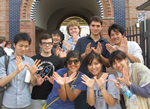 NanoJapan isn't just about sending U.S. students to Japan. From February 20 - 26, 2014, Rice University hosted 14 Japanese college students as part of their two week tour of U.S. universities and colleges.These students all participate in Keiko Packard's KIP program in Tokyo; a discussion group for Japanese college students interested in internationalization and globalization. Packard-sensei serves as the NanoJapan Program Representative in Japan and, since 2008, all NanoJapan students have had the opportunity to join this discussion group during their three-week orientation in Tokyo. The U.S. NanoJapan students attend three evening discussion sessions with the KIP Japanese students and, in addition to the formal programming, the Japanese students often invite NanoJapan students out for dinner and sight-seeing in Tokyo. Many KIP and NanoJapan students have formed long-lasting friendships out of this unique opportunity for inter-cultural exchange and networking.
NanoJapan isn't just about sending U.S. students to Japan. From February 20 - 26, 2014, Rice University hosted 14 Japanese college students as part of their two week tour of U.S. universities and colleges.These students all participate in Keiko Packard's KIP program in Tokyo; a discussion group for Japanese college students interested in internationalization and globalization. Packard-sensei serves as the NanoJapan Program Representative in Japan and, since 2008, all NanoJapan students have had the opportunity to join this discussion group during their three-week orientation in Tokyo. The U.S. NanoJapan students attend three evening discussion sessions with the KIP Japanese students and, in addition to the formal programming, the Japanese students often invite NanoJapan students out for dinner and sight-seeing in Tokyo. Many KIP and NanoJapan students have formed long-lasting friendships out of this unique opportunity for inter-cultural exchange and networking.
NanoJapan 2013 alums Dante Zakhidov and JJ Allred returned the favor when they served as organizers and hosts during the KIP program's visit to Rice. Over the course of their one-week stay, KIP students had the opportunity to sit-in on Rice classes and seminars, participate in a discussion group on Glocalization with Rice students, have lunch with the Office of the President, visit JAXA and Space Center Houston, and were hosted for a party by the Japan-America Society of Houston. KIP students also had lots of time for social interaction and informal networking with Rice students as they lived in the Rice residential colleges during their stay, ate meals in the student cafeteria, and attended a Rice University baseball game.
The NanoJapan program would like to thank Dante and JJ for their organization and hosting of this visit and we look forward to welcoming future groups of KIP students to Rice in coming years.
 The experiences of three Rice University students who participated in the 2013 NanoJapan: International Research Experience for Undergraduates Program were highlighted in a Rice News article. Raymundo Moya ’17, conducted research with Prof. Riichiro Saito at Tohoku University and NanoJapan was his first trip outside of Texas. “It was a big jump,” he said. But Moya had two NanoJapan companions at Tohoku University, where he studied the physics behind phonon heat transfer in carbon nanotubes.". Traveling to Japan was a homecoming of sorts for Dante Zakhidov ’15. Zakhidov’s scientist father had spent time working and living in Japan with his young family. “My dad did some of his pioneering research in Japan,” said Zakihidov, who was there for a year as an infant. “He worked on using C60 (buckyballs) as a dopant for conducting polymers. I have no memory of living there, but it was great to go back.” Zakihidov studied new techniques to activate graphite for lithium ion batteries during his three-week stint at Shinshu University. And he thoroughly enjoyed his time with the rest of the NanoJapan team. “There were so many activities that pushed the 12 of us together,” he said. “We fully developed and bonded. That’s what’s powerful about the program: You have a network to fall back on.” J.J. Allred ’16 is looking forward to a two-week break before classes, but given the choice, “I’d rather be in Japan,” he said. The rising sophomore studied the reaction of graphene to terahertz radiation during his time at Osaka University. “When the program ended, I had discovered something that blossomed into four or five other things to look into,” he said. “Hopefully, this fall I’ll be able continue working on it with Dr. Kono.”
The experiences of three Rice University students who participated in the 2013 NanoJapan: International Research Experience for Undergraduates Program were highlighted in a Rice News article. Raymundo Moya ’17, conducted research with Prof. Riichiro Saito at Tohoku University and NanoJapan was his first trip outside of Texas. “It was a big jump,” he said. But Moya had two NanoJapan companions at Tohoku University, where he studied the physics behind phonon heat transfer in carbon nanotubes.". Traveling to Japan was a homecoming of sorts for Dante Zakhidov ’15. Zakhidov’s scientist father had spent time working and living in Japan with his young family. “My dad did some of his pioneering research in Japan,” said Zakihidov, who was there for a year as an infant. “He worked on using C60 (buckyballs) as a dopant for conducting polymers. I have no memory of living there, but it was great to go back.” Zakihidov studied new techniques to activate graphite for lithium ion batteries during his three-week stint at Shinshu University. And he thoroughly enjoyed his time with the rest of the NanoJapan team. “There were so many activities that pushed the 12 of us together,” he said. “We fully developed and bonded. That’s what’s powerful about the program: You have a network to fall back on.” J.J. Allred ’16 is looking forward to a two-week break before classes, but given the choice, “I’d rather be in Japan,” he said. The rising sophomore studied the reaction of graphene to terahertz radiation during his time at Osaka University. “When the program ended, I had discovered something that blossomed into four or five other things to look into,” he said. “Hopefully, this fall I’ll be able continue working on it with Dr. Kono.”
>> Read the full Rice News Article "NanoJapan: A Big Experience"
Physicist Neal Lane, a former Presidential Science Adviser and former National Science Foundation (NSF) director, is the 2013 recipient of its Vannevar Bush Award. Lane is the Malcolm Gillis University Professor at Rice University and holds appointments as Senior Fellow of the James A. Baker III Institute for Public Policy and in the university's department of physics and astronomy. He served as assistant to President Clinton for Science and Technology and director of the White House Office of Science and Technology Policy from August 1998 to January 2001. He was the NSF director from October 1993 to August 1998. Since 2011, he has served as one of six External Advisory Board Members for the TeraNano PIRE Center. Each year, the National Science Board presents the Vannevar Bush Award to exceptional, lifelong leaders in science and technology who have made substantial contributions to the welfare of the nation through public service activities in science, technology and public policy.
>> Lean More About Neal Lane's 2013 Vannevar Bush Award
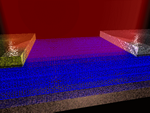 Researchers at Rice University and Sandia National Laboratories have
made a nanotube-based photodetector that gathers light in and beyond
visible wavelengths. It promises to make possible a unique set of
optoelectronic devices, solar cells and perhaps even specialized
cameras. The Rice detector, the focus of a paper that appeared today in the online Nature journal
Scientific Reports, is based on extra-long carbon nanotubes. At 300 micrometers, the nanotubes are still only about 100th of an inch long, but each tube is thousands of times longer than it is wide.
Researchers at Rice University and Sandia National Laboratories have
made a nanotube-based photodetector that gathers light in and beyond
visible wavelengths. It promises to make possible a unique set of
optoelectronic devices, solar cells and perhaps even specialized
cameras. The Rice detector, the focus of a paper that appeared today in the online Nature journal
Scientific Reports, is based on extra-long carbon nanotubes. At 300 micrometers, the nanotubes are still only about 100th of an inch long, but each tube is thousands of times longer than it is wide.
This illustration shows an array of parallel carbon nanotubes 300 micrometers long that are attached to electrodes and display unique qualities as a photodetector, according to researchers at Rice University and Sandia National Laboratories. (Credit: Sandia National Laboratories)
>> Read "Broadband, Polarization-Sensitive Photodetector Based on Optically-Thick Films of Macroscopically Long, Dense, and Aligned Carbon Nanotubes" in Scientific Reports
![]() Prof. Junichiro Kono will be giving a talk, in Japanese, at the University of Tokyo that adresses the topic of the transition from a graduate student to a faculty researchers in the U.S. This talk is hosted by the Global Center for Innovation in Engineering Education and will be held on February 28 from 14:00 - 16:00. For more details see the flier below.
Prof. Junichiro Kono will be giving a talk, in Japanese, at the University of Tokyo that adresses the topic of the transition from a graduate student to a faculty researchers in the U.S. This talk is hosted by the Global Center for Innovation in Engineering Education and will be held on February 28 from 14:00 - 16:00. For more details see the flier below.
>> Flier PDF: "Transition from Graduate Student to Faculty Researcher in the U.S.", Prof. Junichiro Kono
>> Learn More About the Global Center for Innovation in Engineering Education
![]() Alec Nicol (NJ 2012) was named second author on a manuscript that includes portions of the researchshe did at Chiba Uniersity's Ochiai-Aoki Lab as a participant in the NanoJapan Program.
Alec Nicol (NJ 2012) was named second author on a manuscript that includes portions of the researchshe did at Chiba Uniersity's Ochiai-Aoki Lab as a participant in the NanoJapan Program.
Citation: Mahjoub, A.M., Nicol, A., Abe, T., Ouchi, T., Iso, Y., Kida, M., Aoki, N., Miyamoto, K., Omatsu, T., Bird, J.P., Ferry, D.K., Ishibashi, K. and Ochiai, Y. "GR-FET Application for High-frequency Detection Device", Nanoscale Research Letters, 8:22 (2013) DOI: 10.1186/1556-276X-8-22.
>> Publication Abstract
>> Learn More About Alec's NanoJapan Experience
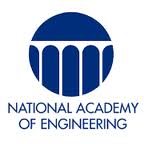 The National Academy of Engineering (NAE) has released Infusing Real World Experiences into Engineering Education which showcases 29 engineering programs at colleges and universities across the nation that effectively incorporate such activities into their curriculum and highlights best practices for schools seeking to create new programs. NanoJapan is one of just three global programs to be profiled in this report. “This nation’s prosperity, security, and quality of life are direct results of leadership in the engineering achievements that drive society forward,” said Dr. Charles M. Vest, president of the National Academy of Engineering. “These programs are strategically preparing students to become the engineers who will tackle the technical and social complexities that lie ahead in the 21st century.” NanoJapan is proud to have been selected for inclusion in this prestigious report highlighting best practices for infusing real world experiences into engineering education.
The National Academy of Engineering (NAE) has released Infusing Real World Experiences into Engineering Education which showcases 29 engineering programs at colleges and universities across the nation that effectively incorporate such activities into their curriculum and highlights best practices for schools seeking to create new programs. NanoJapan is one of just three global programs to be profiled in this report. “This nation’s prosperity, security, and quality of life are direct results of leadership in the engineering achievements that drive society forward,” said Dr. Charles M. Vest, president of the National Academy of Engineering. “These programs are strategically preparing students to become the engineers who will tackle the technical and social complexities that lie ahead in the 21st century.” NanoJapan is proud to have been selected for inclusion in this prestigious report highlighting best practices for infusing real world experiences into engineering education.
>> Read the full NAE Press Release
>> Download a Copy of the NAE Report
>> View the Related Rice News Article

 Rice University and the University of Tulsa welcome Eri Brooks (left) from Tottori University and Mariko Yamada (right) from Hiroshima University to the TeraNano PIRE Education Team! After one year of training at the Japanese Ministry of Education, Eri and Mariko came to the U.S. as participants in the Long-term Educational Administrators Program (LEAP). This program is designed to train the administrative staff of Japanese universities to be international educators. They are both members of a select group of Japanese administrators, who have been chosen to work in the United States and to learn more about and educational system here. Eri will be working at Rice University under the advisement of Sarah Phillips, assisting with the NanoJapan Program and other international initiatives at Rice, and Mariko is working under the advisement of Dr. Cheryl Matherly in the Center for Global Education at the University of Tulsa. After returning to Japan in March, Eri and Mariko both hope to increase international opportunities for Japanese students and to attract more international students and visitors to Japan.
Rice University and the University of Tulsa welcome Eri Brooks (left) from Tottori University and Mariko Yamada (right) from Hiroshima University to the TeraNano PIRE Education Team! After one year of training at the Japanese Ministry of Education, Eri and Mariko came to the U.S. as participants in the Long-term Educational Administrators Program (LEAP). This program is designed to train the administrative staff of Japanese universities to be international educators. They are both members of a select group of Japanese administrators, who have been chosen to work in the United States and to learn more about and educational system here. Eri will be working at Rice University under the advisement of Sarah Phillips, assisting with the NanoJapan Program and other international initiatives at Rice, and Mariko is working under the advisement of Dr. Cheryl Matherly in the Center for Global Education at the University of Tulsa. After returning to Japan in March, Eri and Mariko both hope to increase international opportunities for Japanese students and to attract more international students and visitors to Japan.
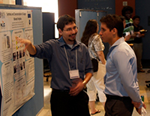 The summer doldrums were blown away from Duncan Hall Aug. 3 as hundreds of Rice faculty, students and postdoctoral researchers gathered to learn about one another’s work at the 26th annual Rice Quantum Institute Summer Research Colloquium. The colloquium, one of the largest annual research meetings on campus, highlights multidisciplinary and applied physics research by undergraduates, graduate students and postdoctoral researchers from dozens of labs across campus. The event serves as the capstone for the NanoJapan: International Research Experience for Undergrraduates Program and three NanoJapan students received prizes for their poster presentations. Grace Meikle, a University of Notre Dame student who did research at the University of Tokyo with Prof. Maruyama, received a $250 Texas Instruments award; Mitchell Trafford, a University of Tulsa student who did research with Prof. Kawano at the Tokyo Institute of Technology received a $250 TeraNano PIRE award; and Aren Siekmeier, a University of Minnesota student who did research with Prof. Ochiai and Prof. Aoki at Chiba University, received an Honorable Mention. Congratulations all!
The summer doldrums were blown away from Duncan Hall Aug. 3 as hundreds of Rice faculty, students and postdoctoral researchers gathered to learn about one another’s work at the 26th annual Rice Quantum Institute Summer Research Colloquium. The colloquium, one of the largest annual research meetings on campus, highlights multidisciplinary and applied physics research by undergraduates, graduate students and postdoctoral researchers from dozens of labs across campus. The event serves as the capstone for the NanoJapan: International Research Experience for Undergrraduates Program and three NanoJapan students received prizes for their poster presentations. Grace Meikle, a University of Notre Dame student who did research at the University of Tokyo with Prof. Maruyama, received a $250 Texas Instruments award; Mitchell Trafford, a University of Tulsa student who did research with Prof. Kawano at the Tokyo Institute of Technology received a $250 TeraNano PIRE award; and Aren Siekmeier, a University of Minnesota student who did research with Prof. Ochiai and Prof. Aoki at Chiba University, received an Honorable Mention. Congratulations all!
>> Read the full Rice News Article
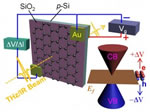 An applied electric voltage can prompt a centimeter-square slice of graphene to change and control the transmission of electromagnetic radiation with wavelengths from the terahertz to the midinfrared. The discovery was made by Prof. Kono and his colleagues at Rice and the Institute of Laser Engineering at Osaka University and was reported online this month in the American Chemical Society journal Nano Letters.
An applied electric voltage can prompt a centimeter-square slice of graphene to change and control the transmission of electromagnetic radiation with wavelengths from the terahertz to the midinfrared. The discovery was made by Prof. Kono and his colleagues at Rice and the Institute of Laser Engineering at Osaka University and was reported online this month in the American Chemical Society journal Nano Letters.
>> Read the full Rice News Article
 Congratulations to the 12 students selected for the 2012 NanoJapan: International Research Experience for Undergraduates Program! The program received 79 applications in 2012, making NanoJapan quite competitive with a selection rate of just 15.2%. This diverse group of students includes four women and one student who attends a Historically Black College or University. NanoJapan 2012 students will depart for Japan on May 12 for a three-week language and culture orientation in Tokyo followed by an eight-week research internship at one of our collaborating laboratories at the University of Tokyo, Tokyo Institute of Technology, Osaka University, Kyoto University, Shinshu University, Tohoku University or Chiba University.
Congratulations to the 12 students selected for the 2012 NanoJapan: International Research Experience for Undergraduates Program! The program received 79 applications in 2012, making NanoJapan quite competitive with a selection rate of just 15.2%. This diverse group of students includes four women and one student who attends a Historically Black College or University. NanoJapan 2012 students will depart for Japan on May 12 for a three-week language and culture orientation in Tokyo followed by an eight-week research internship at one of our collaborating laboratories at the University of Tokyo, Tokyo Institute of Technology, Osaka University, Kyoto University, Shinshu University, Tohoku University or Chiba University.
>> Read the NanoJapan 2012 Student Profiles
 Georgia Lagoudas, a NanoJapan 2009 student from Rice University, has been selected as a recipient of a prestigous 2012 National Science Foundation Graduate Research Fellowship. Georgia conducted research at the University of Tokyo with Prof. Maruyama in 2009 and following completion of our program was elected as the Rice University Student Association President. She plans to pursue a PhD in Bioengineering at UC Berkeley, Duke, or MIT. Congratulations Georgia!
Georgia Lagoudas, a NanoJapan 2009 student from Rice University, has been selected as a recipient of a prestigous 2012 National Science Foundation Graduate Research Fellowship. Georgia conducted research at the University of Tokyo with Prof. Maruyama in 2009 and following completion of our program was elected as the Rice University Student Association President. She plans to pursue a PhD in Bioengineering at UC Berkeley, Duke, or MIT. Congratulations Georgia!
>> Read More About Georgia's Fellowship
>> Read Georgia's NanoJapan Student Profile
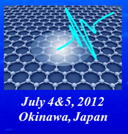 TeraNano PIRE Japan Research Director Masayoshi Tonouchi (Osaka) and Iwao Hosaka (NICT) will chair the 2nd International Symposium on Terahertz Nanoscience (TeraNano 2012) at the Okinawa Subtropical Environment Remote Sensing Center, National Institute of Information and Communications Technology, in Okinawa, Japan, on July 4 and 5, 2012. This symposium provides a forum for the exchange of information on the basic science, technology, and applications of terahertz (THz) waves. Although it will cover all aspects of THz science and technology, we will emphasize the advantages of combining the interdisciplinary domains of nanotechnology and THz technology, especially the field of THz science in nanomaterials and nanodevices. The conference will place special emphasis on international collaborations in research and education in this highly interdisciplinary and increasingly global field . Invited talks on current status and future prospects by leading researchers will be given as well as some contributed oral presentations. This workshop is supported by a grant from the the JSPS Core-to-Core Program.
TeraNano PIRE Japan Research Director Masayoshi Tonouchi (Osaka) and Iwao Hosaka (NICT) will chair the 2nd International Symposium on Terahertz Nanoscience (TeraNano 2012) at the Okinawa Subtropical Environment Remote Sensing Center, National Institute of Information and Communications Technology, in Okinawa, Japan, on July 4 and 5, 2012. This symposium provides a forum for the exchange of information on the basic science, technology, and applications of terahertz (THz) waves. Although it will cover all aspects of THz science and technology, we will emphasize the advantages of combining the interdisciplinary domains of nanotechnology and THz technology, especially the field of THz science in nanomaterials and nanodevices. The conference will place special emphasis on international collaborations in research and education in this highly interdisciplinary and increasingly global field . Invited talks on current status and future prospects by leading researchers will be given as well as some contributed oral presentations. This workshop is supported by a grant from the the JSPS Core-to-Core Program.
>> TeraNano 2012 Workshop Website
 TeraNano PIRE co-PI Jonathan Bird will host a U.S. - Japan TeraNano Workshop on Photonics and Nanoelectronics at the University at Buffalo (SUNY) on Friday, May 11, 2012. This workshop is Workshop co-sponsored by the UB School of Engineering and Applied Sciences, the UB Department of Electrical Engineering, and the JSPS Core-to-Core program.
TeraNano PIRE co-PI Jonathan Bird will host a U.S. - Japan TeraNano Workshop on Photonics and Nanoelectronics at the University at Buffalo (SUNY) on Friday, May 11, 2012. This workshop is Workshop co-sponsored by the UB School of Engineering and Applied Sciences, the UB Department of Electrical Engineering, and the JSPS Core-to-Core program.
>> Workshop Schedule ![]()
 Though the NanoJapan 2011 students were not able to spend their summer in Japan due to the aftereffects of the March 2011 earthquake and tsunami they did have the opportunity to visit Japan for ten-days in November to present their summer research at the 1st International Symposium on Terahertz Nanoscience (TeraNano 2011). Chaired by TeraNano PIRE Japan Research Director Masayoshi Tonouchi, the symposium provides a forum for the exchange of information on the basic science, technology, and applications of terahertz (THz) waves and placed special emphasis on international collaborations in research and education in this highly interdisciplinary and increasingly global field. In addition to the presentation of their summer research posters, NanoJapan 2011 students also visited Kyoto, Osaka University, and Koya-san.
Though the NanoJapan 2011 students were not able to spend their summer in Japan due to the aftereffects of the March 2011 earthquake and tsunami they did have the opportunity to visit Japan for ten-days in November to present their summer research at the 1st International Symposium on Terahertz Nanoscience (TeraNano 2011). Chaired by TeraNano PIRE Japan Research Director Masayoshi Tonouchi, the symposium provides a forum for the exchange of information on the basic science, technology, and applications of terahertz (THz) waves and placed special emphasis on international collaborations in research and education in this highly interdisciplinary and increasingly global field. In addition to the presentation of their summer research posters, NanoJapan 2011 students also visited Kyoto, Osaka University, and Koya-san.
>> TeraNano 2011 Symposium Website
>> NanoJapan 2011 Program Schedule ![]()
>> NanoJapan 2011 Poster Session ![]()
 The NanoJapan - U.S. 2011 program was highlighted in the Gulfstream, the Japan Business Association of Houston's Newsletter.
The NanoJapan - U.S. 2011 program was highlighted in the Gulfstream, the Japan Business Association of Houston's Newsletter.
>> Read More (Japanese only)
 The NanoJapan - U.S. 2011 program was highlighted in The Southern Journal, a Japanese Community Newspaper. The article focuses on the program's collaborations with the Japan Association of Greater Houston (JAGH) and highlights the Nagashi Somen machine that NanoJapan participants built and demonstrated at a number of JAGH events over the course of the summer.
The NanoJapan - U.S. 2011 program was highlighted in The Southern Journal, a Japanese Community Newspaper. The article focuses on the program's collaborations with the Japan Association of Greater Houston (JAGH) and highlights the Nagashi Somen machine that NanoJapan participants built and demonstrated at a number of JAGH events over the course of the summer.
>> Read More (Japanese only, article begins on pg. 3)
![]() The summer 2011 NanoJapan - U.S. Program is highlighted in the August 2011 edition of Photonics Spectra. "When it became clear that the effects of the March earthquake in Sendai were going to impede the undergraduate lab internship program known as NanoJapan, the program underwent a reversal: Instead of sending US students to Japan, students from partner labs in Japan traveled to Houston’s Rice University for three months of study..."
The summer 2011 NanoJapan - U.S. Program is highlighted in the August 2011 edition of Photonics Spectra. "When it became clear that the effects of the March earthquake in Sendai were going to impede the undergraduate lab internship program known as NanoJapan, the program underwent a reversal: Instead of sending US students to Japan, students from partner labs in Japan traveled to Houston’s Rice University for three months of study..."
>> Read More
![]() The NanoJapan program is highlighted in the Spring 2011 edition of the IIE Networker magazine. "Jeffrey Lee, a sophomore majoring in mechanical engineering at Rice University, described the moment during the 2010 NanoJapan Program when he really understood the global nature of science research: “The best example…came when a professor from Boston University came to [Professor Tonouchi’s] lab and gave a talk at an Osaka University symposium. Sometime that week, I found myself eating dinner with an American professor, a doctoral student from China, all hosted by a Japanese professor and his lab, and I realized truth behind the statement that science transcends international borders.” Lee’s experience reinforced one of the learning objectives of the NanoJapan International Research Experience for Undergraduates...
The NanoJapan program is highlighted in the Spring 2011 edition of the IIE Networker magazine. "Jeffrey Lee, a sophomore majoring in mechanical engineering at Rice University, described the moment during the 2010 NanoJapan Program when he really understood the global nature of science research: “The best example…came when a professor from Boston University came to [Professor Tonouchi’s] lab and gave a talk at an Osaka University symposium. Sometime that week, I found myself eating dinner with an American professor, a doctoral student from China, all hosted by a Japanese professor and his lab, and I realized truth behind the statement that science transcends international borders.” Lee’s experience reinforced one of the learning objectives of the NanoJapan International Research Experience for Undergraduates...
>> Read More
 The NanoJapan program is highlighted in the Spring 2011 edition of the APS Physics Forum on Education Newsletter. "Jeffrey Lee, a sophomore majoring in mechanical engineering at Rice University, described the moment during the 2010 NanoJapan Program when he really understood the global nature of science research: “The best example…came when a professor from Boston University came to [Professor Tonouchi’s] lab and gave a talk at an Osaka University symposium. Sometime that week, I found myself eating dinner with an American professor, a doctoral student from China, all hosted by a Japanese professor and his lab, and I realized truth behind the statement that science transcends international borders.” Lee’s experience reinforced one of the learning objectives of the NanoJapan International Research Experience for Undergraduates...
The NanoJapan program is highlighted in the Spring 2011 edition of the APS Physics Forum on Education Newsletter. "Jeffrey Lee, a sophomore majoring in mechanical engineering at Rice University, described the moment during the 2010 NanoJapan Program when he really understood the global nature of science research: “The best example…came when a professor from Boston University came to [Professor Tonouchi’s] lab and gave a talk at an Osaka University symposium. Sometime that week, I found myself eating dinner with an American professor, a doctoral student from China, all hosted by a Japanese professor and his lab, and I realized truth behind the statement that science transcends international borders.” Lee’s experience reinforced one of the learning objectives of the NanoJapan International Research Experience for Undergraduates...
>> Read More
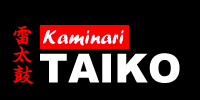 Kaminari Taiko is a Japanese drumming ensemble based in Houston, Texas. On Tuesday, June 14 Kaminari Taiko came to Rice for a special workshop for the NanoJapan - U.S. 2011 Program as part of their One Heart Taiko Tour. The One Heart Taiko Tour is a series of fun-filled, hands-on, educational taiko workshops and taiko performances for children of all ages. The primary mission of the Tour is to provide these workshops and performances free of charge to local community organizations and educational institutions from the elementary school to university level throughout Texas.
Kaminari Taiko is a Japanese drumming ensemble based in Houston, Texas. On Tuesday, June 14 Kaminari Taiko came to Rice for a special workshop for the NanoJapan - U.S. 2011 Program as part of their One Heart Taiko Tour. The One Heart Taiko Tour is a series of fun-filled, hands-on, educational taiko workshops and taiko performances for children of all ages. The primary mission of the Tour is to provide these workshops and performances free of charge to local community organizations and educational institutions from the elementary school to university level throughout Texas.
>> Learn More About Kaminari Taiko & the One Heart Taiko Tour
![]() “Today we had an activity called Taiko which is drumming and it's just one of the things we do as a group I guess to learn about Japanese culture," said American research student Ohi Dibua. “Actually this is my first time playing Taiko but I was excited, very nice,” said Kaoru Shibuya. This is all part of a research and cultural experience that was supposed to happen in Japan. However, in the wake of the March earthquake and tsunami that damaged some of the Japanese host sites, the program, aptly called 'Nano Japan' that began in 2005, has been transplanted to Rice University for the summer. These are all smart kids focusing on nano technology and research and still finding time to squeeze in some good old fashioned Japanese fun. This may not be Japan but Rice University is doing all it can to make the experience great for the American and Japanese students.
“Today we had an activity called Taiko which is drumming and it's just one of the things we do as a group I guess to learn about Japanese culture," said American research student Ohi Dibua. “Actually this is my first time playing Taiko but I was excited, very nice,” said Kaoru Shibuya. This is all part of a research and cultural experience that was supposed to happen in Japan. However, in the wake of the March earthquake and tsunami that damaged some of the Japanese host sites, the program, aptly called 'Nano Japan' that began in 2005, has been transplanted to Rice University for the summer. These are all smart kids focusing on nano technology and research and still finding time to squeeze in some good old fashioned Japanese fun. This may not be Japan but Rice University is doing all it can to make the experience great for the American and Japanese students.
>> Watch Video
 Twenty-two Japanese and 14 U.S. students experienced a cultural exchange as they learned Japanese Taiko drum rhythms during two one-hour sessions at Rice University on Tuesday morning — but it was a reverse of what should have happened.
Twenty-two Japanese and 14 U.S. students experienced a cultural exchange as they learned Japanese Taiko drum rhythms during two one-hour sessions at Rice University on Tuesday morning — but it was a reverse of what should have happened.
>> Read More
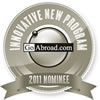 As the leading resource for meaningful travel, GoAbroad is pleased to have the opportunity to present annual awards for innovations in international education. The NanoJapan program was selected as a finalist in the Innovative New Program category.
>> Read More
As the leading resource for meaningful travel, GoAbroad is pleased to have the opportunity to present annual awards for innovations in international education. The NanoJapan program was selected as a finalist in the Innovative New Program category.
>> Read More
 In the wake of the March 11 earthquake and rolling blackouts that are severely affecting university research laboratories across Japan, the award-winning undergraduate internship program NanoJapan is scrambling to run its annual summer program in reverse; rather than having U.S. undergraduates travel to Japan for lab internships, NanoJapan is offering partner labs in Japan the opportunity to send 25-30 students to Rice University laboratories for three months.
>> Read More
In the wake of the March 11 earthquake and rolling blackouts that are severely affecting university research laboratories across Japan, the award-winning undergraduate internship program NanoJapan is scrambling to run its annual summer program in reverse; rather than having U.S. undergraduates travel to Japan for lab internships, NanoJapan is offering partner labs in Japan the opportunity to send 25-30 students to Rice University laboratories for three months.
>> Read More
 The TeraNano PIRE project has been greatly touched by the outpouring of support for our friends and colleagues in Japan. Our program remains in direct communication with all of our collaborators abroad and we are happy to report that, to the best of our knonwledge, the members of all of our collaborating laboratories - including those at Tohoku University in Sendai - are safe. Tohoku University remains closed and many other universities in and around the Tokyo-area have delayd the start of their spring terms due to continued rolling power outages. The TeraNano PIRE Program, in collaboration with Rice University, is currently investigating options to provide support to our collaborating labs in Japan and more information on this will be posted to our website in the coming weeks. We have posted the resources below as a service to our alumni, students, colleagues, and friends seeking information on the situation in Japan and on ways they can help support relief efforts. We will continue to update this section of our website with additional information as it becomes available.
The TeraNano PIRE project has been greatly touched by the outpouring of support for our friends and colleagues in Japan. Our program remains in direct communication with all of our collaborators abroad and we are happy to report that, to the best of our knonwledge, the members of all of our collaborating laboratories - including those at Tohoku University in Sendai - are safe. Tohoku University remains closed and many other universities in and around the Tokyo-area have delayd the start of their spring terms due to continued rolling power outages. The TeraNano PIRE Program, in collaboration with Rice University, is currently investigating options to provide support to our collaborating labs in Japan and more information on this will be posted to our website in the coming weeks. We have posted the resources below as a service to our alumni, students, colleagues, and friends seeking information on the situation in Japan and on ways they can help support relief efforts. We will continue to update this section of our website with additional information as it becomes available.
Japanese Community Coalition of Houston Japan Relief Fund
American Red Cross - Japan Donation Fund
Google Crisis Response - Japan
U.S. Dept. of State - Japan Earthquake Resources
Tohoku University Update Blog by Nojiri-sensei (JP Only)
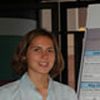 Georgia Lagoudas (NJ 2009) was named third author on a manuscript that includes portions of the work she did at the University of Tokyo's Maruyama-Shiomi Laboratory as a participant in the NanoJapan Program. >> Student Profile
Georgia Lagoudas (NJ 2009) was named third author on a manuscript that includes portions of the work she did at the University of Tokyo's Maruyama-Shiomi Laboratory as a participant in the NanoJapan Program. >> Student Profile
P. Zhao, E. Einarsson, G. Lagoudas, J. Shiomi, S. Chiashi and S. Maruyama "Tunable Separation of Single-walled Carbon Nanotubes by Dual-surfactant Density Gradient Ultracentrifugation," Nano Research, 1998-0124 (2011) DOI: 10.1007/s12274-011-0118-9. [Abstract, Full Text].
 More than 150 gathered Thursday to celebrate the official dedication of Brockman Hall for Physics, Rice's new state-of-the-art home for fundamental and applied physics research. Rice faculty and staff began moving into Brockman Hall in February. When fully occupied in June, the building will be home to dozens of experimental, theoretical and applied physicists from Rice's departments of Physics and Astronomy and of Electrical and Computer Engineering. Brockman Hall will support research in atomic, molecular and optical physics; biophysics; condensed matter physics; nanoengineering and photonics.
More than 150 gathered Thursday to celebrate the official dedication of Brockman Hall for Physics, Rice's new state-of-the-art home for fundamental and applied physics research. Rice faculty and staff began moving into Brockman Hall in February. When fully occupied in June, the building will be home to dozens of experimental, theoretical and applied physicists from Rice's departments of Physics and Astronomy and of Electrical and Computer Engineering. Brockman Hall will support research in atomic, molecular and optical physics; biophysics; condensed matter physics; nanoengineering and photonics.
>> Read More
 The Institute of International Education (IIE) led a delegation of U.S. higher education government officials and high level administrators from ten U.S. colleges and universities, who visited India as part of the International Academic Partnership Program, funded by the U.S. Department of Education’s Fund for the Improvement of Postsecondary Education (FIPSE). This program, an initiative of IIE’s Center for International Partnerships in Higher Education, seeks to increase the number of international partnerships between higher education institutions in the U.S. and those in India. Higher education institutions in the United States and India are increasingly seeking out partnerships with counterparts to enhance academic collaboration, expand curricular offerings, advance joint research, and prepare their students with the international experiences and cross-cultural tools needed in their careers. However, many institutions face significant challenges in navigating education systems in other countries, identifying appropriate partners and developing effective institutional partnership strategies. Representatives of ten U.S. institutions, including NSF-PIRE Co-PI Dr. Cheryl Matherly, Associate Provost for Global Education at the University of Tulsa, participated in a week-long study tour in India, visiting potential Indian partner campuses and international organizations in Bangalore, Mumbai and Delhi. The November 7-12 visit was the culmination of a year-long training program focused on implementing and sustaining partnerships with higher education institutions in India. Eduardo Ochoa, Assistant Secretary for Postsecondary Education, U.S. Department of Education, joined the delegation, along with Molly Maguire Teas, Senior Advisor for Education at the Bureau of South and Central Asian Affairs, U.S. Department of State.
The Institute of International Education (IIE) led a delegation of U.S. higher education government officials and high level administrators from ten U.S. colleges and universities, who visited India as part of the International Academic Partnership Program, funded by the U.S. Department of Education’s Fund for the Improvement of Postsecondary Education (FIPSE). This program, an initiative of IIE’s Center for International Partnerships in Higher Education, seeks to increase the number of international partnerships between higher education institutions in the U.S. and those in India. Higher education institutions in the United States and India are increasingly seeking out partnerships with counterparts to enhance academic collaboration, expand curricular offerings, advance joint research, and prepare their students with the international experiences and cross-cultural tools needed in their careers. However, many institutions face significant challenges in navigating education systems in other countries, identifying appropriate partners and developing effective institutional partnership strategies. Representatives of ten U.S. institutions, including NSF-PIRE Co-PI Dr. Cheryl Matherly, Associate Provost for Global Education at the University of Tulsa, participated in a week-long study tour in India, visiting potential Indian partner campuses and international organizations in Bangalore, Mumbai and Delhi. The November 7-12 visit was the culmination of a year-long training program focused on implementing and sustaining partnerships with higher education institutions in India. Eduardo Ochoa, Assistant Secretary for Postsecondary Education, U.S. Department of Education, joined the delegation, along with Molly Maguire Teas, Senior Advisor for Education at the Bureau of South and Central Asian Affairs, U.S. Department of State.
>> Read More
 Marcus Najera (NJ 2010), a Biomedical Engineering & Physics student at the University of Texas, San Antonio (UTSA) has been selected as a recipient of UTSA's MARC U*STAR Award.The Minority Access to Research Careers Undergraduate Student Training for Academic Research Award is funded by the National Institute of General Medical Sciences (NIH/NIGMS) and provides the training needed by students to enter and succeed in doctoral studies (Ph.D. or M.D./Ph.D.) Positions are available for outstanding Junior/Senior level (preferably with two years remaining prior to graduation) biology, chemistry, mathematics, statistics, computer science or engineering majors. All MARC participants take part in a variety of activities that build their credentials for doctoral program entry and help them to succeed once they are there. They perform original scientific research at UTSA and at a summer internship at top research institutions around the country. They present their research findings at scientific meetings. They take courses to strengthen themselves in their field and in the biosciences, and participate in activities to strengthen themselves personally and professionally. Finally, they are introduced to a broad range of scientific disciplines and are provided with networking opportunities with representatives of some of the nation's top research universities. Benefits include an academic year stipend, tuition support, conference travel grant, and summer research internship stipend for housing and living costs.
Marcus Najera (NJ 2010), a Biomedical Engineering & Physics student at the University of Texas, San Antonio (UTSA) has been selected as a recipient of UTSA's MARC U*STAR Award.The Minority Access to Research Careers Undergraduate Student Training for Academic Research Award is funded by the National Institute of General Medical Sciences (NIH/NIGMS) and provides the training needed by students to enter and succeed in doctoral studies (Ph.D. or M.D./Ph.D.) Positions are available for outstanding Junior/Senior level (preferably with two years remaining prior to graduation) biology, chemistry, mathematics, statistics, computer science or engineering majors. All MARC participants take part in a variety of activities that build their credentials for doctoral program entry and help them to succeed once they are there. They perform original scientific research at UTSA and at a summer internship at top research institutions around the country. They present their research findings at scientific meetings. They take courses to strengthen themselves in their field and in the biosciences, and participate in activities to strengthen themselves personally and professionally. Finally, they are introduced to a broad range of scientific disciplines and are provided with networking opportunities with representatives of some of the nation's top research universities. Benefits include an academic year stipend, tuition support, conference travel grant, and summer research internship stipend for housing and living costs.
Marcus also received received a 2010 Student Presentation Award in Chemical Sciences for the presentation of his NanoJapan research poster at the 2010 Annual Biomedical Research Conference for Minority Students (ABRCMS). Marcus' NanoJapan research focused was conducted at the Osaka Institute of Tecnology under the advisement of Shigehiko Sasa and focused on the "Integration of ZnO Nanorod Biosensor with Field-Effect Transistor". Held in Charlotte, North Carolina from November 10-13, 2010 the ABRCMS conference is designed to encourage underrepresented minority students to pursue advanced training in the biomedical and behavioral sciences, including mathematics and provide faculty mentors and advisors with resources for facilitating students’ success.
>> Student Profile
>> Learn More About the UTSA MARC*U-STAR Award
>> Learn More About ABRCMS
To celebrate the benefits of international education and exchange worldwide, Rice University will host International Education Week (IEW) Nov. 15-20. Events and activities throughout campus will pay tribute to Rice's growing international community. A joint initiative of the U.S. departments of State and Education, IEW promotes programs that prepare Americans for a global environment and attract future leaders from abroad to study, learn and exchange experiences in the United States. Rice's Office of International Students and Scholars (OISS) has organized events around continent-themed days. Each day will feature a lunch-hour discussion on current issues in the selected continent. Friday, November 19 will focus on Asia and as part of this day's activities the NanoJapan: IREU program will hold an Information Session & Alumni Panel Discussion. Held from 1:30 2:30 PM in the Founder's Room (Lovett Hall) this session will provide information on the program to potential applicants and allow them to hear more about the NanoJapan experience from our alumni. All interested students, faculty, and staff are welcome to attend and are encouraged to also attend the Asia brown bag lunch discussion and Wii party that will be held immediately prior to and after our session in the Founder's room.
>> Learn More About International Education Week (IEW)
>> Learn More About IEW Activities at Rice
NanoJapan is now accepting applications for the 2011 program through our online application. If you are a freshman or sophomore engineering or physics students currently attending a U.S. university or college we encourage you to apply today. The application deadline is January 28, 2011 and program participants will be announced in late March.
>> Online Application
![]() The Rice Center for Engineering Leadership has been established at the George R. Brown School of Engineering with a mission of transforming engineering education by ensuring that students experience engineering as a transformative force on both a personal and societal level. John Doerr '73, a leading venture capitalist and early champion of Google and Amazon, among other companies, headlined the RCEL inauguration with a public talk at Duncan Hall's McMurtry Auditorium. Doerr’s interests as an entrepreneur and philanthropist extend to innovative green technology, urban public education, fighting "stupid" poverty and the advancement of women as leaders. Ann Doerr '75, who earned bachelor’s and master’s degrees in electrical engineering at Rice, is an environmental activist and a trustee of the New York-based Environmental Defense Fund.
The Rice Center for Engineering Leadership has been established at the George R. Brown School of Engineering with a mission of transforming engineering education by ensuring that students experience engineering as a transformative force on both a personal and societal level. John Doerr '73, a leading venture capitalist and early champion of Google and Amazon, among other companies, headlined the RCEL inauguration with a public talk at Duncan Hall's McMurtry Auditorium. Doerr’s interests as an entrepreneur and philanthropist extend to innovative green technology, urban public education, fighting "stupid" poverty and the advancement of women as leaders. Ann Doerr '75, who earned bachelor’s and master’s degrees in electrical engineering at Rice, is an environmental activist and a trustee of the New York-based Environmental Defense Fund.
>> View An Archived Webcast of John Doerr's Talk
>> Learn More About RCEL
 Rice University's award-winning undergraduate summer research program NanoJapan will soon expand, thanks to a new five-year, $4 million grant from the National Science Foundation (NSF). NanoJapan, which is open to students from all U.S. universities, combines a traditional study-abroad experience in Japan with a targeted undergraduate research internship in nanotechnology. The program was created in 2005 with funding from the NSF's Partnerships for International Research and Education (PIRE) initiative, which awarded a new five-year grant this month for continued support of the program. "The status of the United States in science and engineering is changing," said NanoJapan founder Junichiro Kono, professor in electrical and computer engineering and of physics and astronomy at Rice. More and more people outside the U.S. are doing cutting-edge research," said Kono, the principal investigator on the NanoJapan grant. "Graduate students today are more likely to succeed if they are prepared to work in a cross-cultural, multinational environment, and that is one area where NanoJapan is particularly successful."
Rice University's award-winning undergraduate summer research program NanoJapan will soon expand, thanks to a new five-year, $4 million grant from the National Science Foundation (NSF). NanoJapan, which is open to students from all U.S. universities, combines a traditional study-abroad experience in Japan with a targeted undergraduate research internship in nanotechnology. The program was created in 2005 with funding from the NSF's Partnerships for International Research and Education (PIRE) initiative, which awarded a new five-year grant this month for continued support of the program. "The status of the United States in science and engineering is changing," said NanoJapan founder Junichiro Kono, professor in electrical and computer engineering and of physics and astronomy at Rice. More and more people outside the U.S. are doing cutting-edge research," said Kono, the principal investigator on the NanoJapan grant. "Graduate students today are more likely to succeed if they are prepared to work in a cross-cultural, multinational environment, and that is one area where NanoJapan is particularly successful."
>> Read More
 Rice University's award-winning Partnerships for International Research and Education (NSF-PIRE) grant was one of just two original PIRE projects selected for competititve renewal. This PIRE renewal award supports the expansion of a unique interdisciplinary U.S.-Japan research and education partnership focused on terahertz (THz) dynamics in nanostructures. The U.S. and Japan are global leaders in both THz research and nanotechnology, and stimulating cooperation is critical to further advance THz science and develop commercial products from new ideas in the lab. However, obstacles exist for international collaboration - primarily linguistic and cultural barriers - and this PIRE project aims to continue breaking down these barriers. The strong educational portfolio of this project focuses on cultivating interest in nanotechnology among young U.S. undergraduate students, especially those from underrepresented groups, and encouraging such students to pursue graduate study and academic research in the physical sciences. This renewed funding will expand and strengthen the award-winning international research experience program for undergraduates called the NanoJapan Program. Recognized as a model for international education programs for science and engineering students, this program will provide U.S. undergraduates with structured research opportunities in Japanese university laboratories with Japanese mentors. Other programs such as undergraduate and graduate research assistantships and the NanoAsia Graduate International Research Experience (IRE) are additional venues for international collaboration for U.S. students.
Rice University's award-winning Partnerships for International Research and Education (NSF-PIRE) grant was one of just two original PIRE projects selected for competititve renewal. This PIRE renewal award supports the expansion of a unique interdisciplinary U.S.-Japan research and education partnership focused on terahertz (THz) dynamics in nanostructures. The U.S. and Japan are global leaders in both THz research and nanotechnology, and stimulating cooperation is critical to further advance THz science and develop commercial products from new ideas in the lab. However, obstacles exist for international collaboration - primarily linguistic and cultural barriers - and this PIRE project aims to continue breaking down these barriers. The strong educational portfolio of this project focuses on cultivating interest in nanotechnology among young U.S. undergraduate students, especially those from underrepresented groups, and encouraging such students to pursue graduate study and academic research in the physical sciences. This renewed funding will expand and strengthen the award-winning international research experience program for undergraduates called the NanoJapan Program. Recognized as a model for international education programs for science and engineering students, this program will provide U.S. undergraduates with structured research opportunities in Japanese university laboratories with Japanese mentors. Other programs such as undergraduate and graduate research assistantships and the NanoAsia Graduate International Research Experience (IRE) are additional venues for international collaboration for U.S. students.
>> Read More
>> Listing of All PIRE 3 Grantees
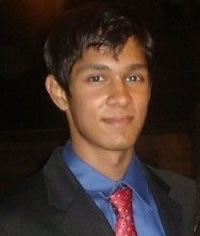
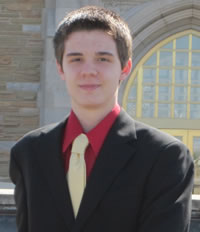
![]()
NanoJapan 2010 participants Nabeem Hashem and Kirby Smithe received Texas Instruments awards for best poster presentations at the Rice Quantum Institute Summer Research Colloquium. Nabeem, a physics and mathematics major from Yale University, received the first place $500 award and Kirby, a physics and mathematics major from the University of Tulsa, received the second place $250 award. Kirby's' research was conducted at Keio University under the advisement of Prof. Kohei Itoh and focused on the "Characterization of Phosphorus Deposition onto Silicon (111) 7x7 Nanostructures for Applications in Quantum Computing"
Rice University has the right stuff for many, according to a British education journal. Times Higher Education (THE), a United Kingdom publication for professionals in education and research, has declared Rice No. 1 in the world in materials science research, based on the number of citations per paper between January 1999 and October 2009. What may be most extraordinary is that when THE last ranked research institutions for materials science two years ago, Rice wasn't even on the list. "It's incredible recognition of Rice's strategic investment into materials science, particularly in nanoscience, and a great accolade for the fantastic work of our faculty," said James Coleman, Rice's vice provost for research.
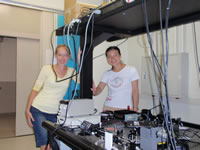 Andrea Barrett, a biomedical engineering student from the Georgia Institute of Technology and NanoJapan 2008 alumnus, has been awarded a Hertz Fellowship. She is one of four women and 11 men selected from an elite pool of nearly 600 applicants and is the only student from the southeastern United States to receive the fellowship this year.
Andrea Barrett, a biomedical engineering student from the Georgia Institute of Technology and NanoJapan 2008 alumnus, has been awarded a Hertz Fellowship. She is one of four women and 11 men selected from an elite pool of nearly 600 applicants and is the only student from the southeastern United States to receive the fellowship this year.
Valued at more than $250,000, Hertz Fellowships are a unique no-strings-attached award that allow exceptional applied scientists and engineers the freedom to innovate. The awards provide support lasting up to five years of their graduate studies. Considered the nation’s most generous Ph.D. fellowships, the Hertz Fellowship are provided by the Fannie and John Hertz Foundation, one of the nation’s leading non-profit organizations. Barrett plans to pursue a Ph.D. in bioinformatics and computational biology and eventually a career in academia as a research professor at a top research institution.
"Winning the Hertz Fellowship is an amazing honor that I am so thrilled to receive,” said Barrett. “The Hertz Fellows are some of the most distinguished and accomplished scientists in the country, and I look forward to learning all I can from them. Earning this fellowship is a remarkable way to culminate my undergraduate career in Biomedical Engineering at Georgia Tech, and I know it will change my life tremendously with all it has to offer for my graduate career.”
>> Student Profile
>> Read More
Sixteen undergraduate students from universities around the US have been selected as participants in NanoJapan 2010. These students will conduct research internships at leading nanotechnology laboratories throughout Japan during the upcoming summer. For more information on our 2010 students and their research host institutions please see the Student Profiles page.
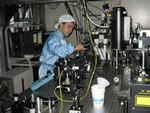 Ethan Schaler (University of Maryland, College Park) has recently been named a 2009 Goldwater Scholarship recipient. The Goldwater Scholarship is the premier national award granted to undergraduate students majoring in mathematics, natural sciences and engineering who are interested in research careers. Created by the U.S. Congress in 1986 to honor Senator Barry M. Goldwater, Goldwater Scholarships are designed to ensure the nation has a source of highly qualified scholars and researchers. Recipients are chosen based on academic merit, research experience and career objectives.
Ethan Schaler (University of Maryland, College Park) has recently been named a 2009 Goldwater Scholarship recipient. The Goldwater Scholarship is the premier national award granted to undergraduate students majoring in mathematics, natural sciences and engineering who are interested in research careers. Created by the U.S. Congress in 1986 to honor Senator Barry M. Goldwater, Goldwater Scholarships are designed to ensure the nation has a source of highly qualified scholars and researchers. Recipients are chosen based on academic merit, research experience and career objectives.
Schaler is a junior with a 4.0 GPA. He is active in Engineers Without Borders, working on the Burkina Faso and Peru projects and co-leading a local project focused on storm-water management on the Anacostia River. He recently returned from Japan, having devoted two summers to research at RIKEN and a semester of study at Tohoku University. Schaler currently conducts research with Prof. Sarah Bergbreiter on MEMS fabrication. He plans to earn a Ph.D. in mechanical engineering focusing on nanotechnology. Schaler would like to teach and conduct research on MEMS at a university or government research institute. He intends to focus post-graduate and career research on developing mobile (walking, jumping, flying, etc.) and networked micro-robots.
" I based a large amount of my application on my research in Japan - especially at RIKEN - and my research proposal essay in particular was a combination of work that I performed at RIKEN and UMD. For this reason, I wanted to let you know of the outcome and thank you all for helping me have such a great opportunity to do research in Japan!"
~ Ethan Schaler
>> Student Profile
>> Read More
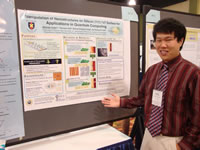 Michael Chien (NJ 2009) received a "Superior Presentation" award for a poster presentation he gave on his NanoJapan 2009 research project: "Manipulation of Nanostructures on Silicon (111) 7x7 Surface for Applications in Quantum Computing" at the Sigma Xi: Scientific Research Society's 2009 Annual Meeting in The Woodlands, TX. Michael conducted this research at Keio University under the advisement of Prof. Kohei Itoh.
Michael Chien (NJ 2009) received a "Superior Presentation" award for a poster presentation he gave on his NanoJapan 2009 research project: "Manipulation of Nanostructures on Silicon (111) 7x7 Surface for Applications in Quantum Computing" at the Sigma Xi: Scientific Research Society's 2009 Annual Meeting in The Woodlands, TX. Michael conducted this research at Keio University under the advisement of Prof. Kohei Itoh.
>> Student Profile
>> Watch a Video of Michael's Poster Presentation
»Online Application for NanoJapan 2010 Now Open(10/2009)
NanoJapan is now accepting applications for the 2010 program through our online application. If you are a freshman or sophomore engineering or physics students currently attending a U.S. university or college we encourage you to apply today. The application deadline is January 31, 2010 and program participants will be announced in late March.
>> Online Application
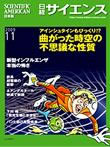 An article on the NanoJapan program appears on page 115 of the November 2009 issue of Nikkei Science, a joint venture between Scientific American and Nikkei Newspaper. Prof. Junichiro Kono of Rice University was interviewed for this article which highlights the NanoJapan program and Rice University to a broad scientific audience in Japan.
An article on the NanoJapan program appears on page 115 of the November 2009 issue of Nikkei Science, a joint venture between Scientific American and Nikkei Newspaper. Prof. Junichiro Kono of Rice University was interviewed for this article which highlights the NanoJapan program and Rice University to a broad scientific audience in Japan.
>> ![]() Download Full Article (Japanese Only)
Download Full Article (Japanese Only)
The International Graduate Program for non-Japanese students was launched in 1999, offering advanced professional training leading to the degrees of Master of Engineering and Doctor of Engineering. Students will have the unique opportunity of taking a degree from the University of Tokyo with lectures and research conducted completely in English. Applicants who have exceptional academic records will be awarded Monbu-Kagakusho scholarship for the whole period of graduate program. Applications for the 2010 Academic Year are due on November 30, 2009.
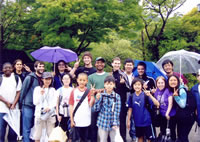 The NanoJapan 2009 orientation program in Tokyo also included a day trip to Kamakura. During our visit to to one of the temples there we met a group of students from Azuma Elementary School who were there on a school field trip. The Japanese students took this opportunity to introduce themselves to the NanoJapan 2009 student group and try out their English. They asked our students a number of questions in English and at the end took a group photo with our students. They recently mailed this photo and letter to the NanoJapan program. This was the highlight of our trip to Kamakura and the NanoJapan program sends a warm welcome to the students of Azuma Elementary School!
The NanoJapan 2009 orientation program in Tokyo also included a day trip to Kamakura. During our visit to to one of the temples there we met a group of students from Azuma Elementary School who were there on a school field trip. The Japanese students took this opportunity to introduce themselves to the NanoJapan 2009 student group and try out their English. They asked our students a number of questions in English and at the end took a group photo with our students. They recently mailed this photo and letter to the NanoJapan program. This was the highlight of our trip to Kamakura and the NanoJapan program sends a warm welcome to the students of Azuma Elementary School!
>> Read Letter From Azuma Students
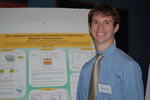
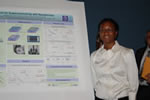
![]() NanoJapan 2009 participants William Love and Precious Cantureceived Texas Instruments awards for best poster presentations at the Rice Quantum Institute Summer Research Colloquium. William, a physics major from Virginia Polytechnic and State University, received the first place $500 award and Precious, an electrical engineering major at Louisiana State University, received the second place $250 award. William's research was conducted at Hokkaido University's Nano-scale Electron Device Laboratory under the advisement of Prof. Yamamoto and focused on the study of "Spin–Dependent Tunneling Characteristics of Co2MnGe-based Magnetic Tunnel Junctions". Precious' research was conducted at Tohoku University's Institute of Materials Research under the advisement of Prof. Iwasa and focused on the "Search for Superconductivity with Nanodevices".
NanoJapan 2009 participants William Love and Precious Cantureceived Texas Instruments awards for best poster presentations at the Rice Quantum Institute Summer Research Colloquium. William, a physics major from Virginia Polytechnic and State University, received the first place $500 award and Precious, an electrical engineering major at Louisiana State University, received the second place $250 award. William's research was conducted at Hokkaido University's Nano-scale Electron Device Laboratory under the advisement of Prof. Yamamoto and focused on the study of "Spin–Dependent Tunneling Characteristics of Co2MnGe-based Magnetic Tunnel Junctions". Precious' research was conducted at Tohoku University's Institute of Materials Research under the advisement of Prof. Iwasa and focused on the "Search for Superconductivity with Nanodevices".
Honorable mentions were also awarded to Georgia Lagoudasfrom Rice University, Erin Sanehira from the University of Rochester, and Hsin-zon Tsai from Texas A&M University.
These awards are generously sponsored by Texas Instruments. Congratulations all!
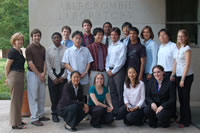 On Friday, August 7, 2009 the NanoJapan 2009 students presented topical research posters on their summer research project at the Rice Quantum Institute's Summer Research Colloquium. See the Student Profiles page of our website for more information on student research projects and to download PDFs of their RQI abstracts and posters.
On Friday, August 7, 2009 the NanoJapan 2009 students presented topical research posters on their summer research project at the Rice Quantum Institute's Summer Research Colloquium. See the Student Profiles page of our website for more information on student research projects and to download PDFs of their RQI abstracts and posters.
The NanoJapan program has launched a Facebook Fan page. We encourage all program alumni, interested applicants, research collaborators, sponsors and other partners to join. This official Facebook Fan page will enable us to share information with you on upcoming events, program activities, and the achievements of our students.
>> Become a Fan!
Rice University was awarded $11.1 million in federal stimulus funding from the National Institute of Standards and Technology (NIST) for construction of the Brockman Hall for Physics, a new research facility. "It's fantastic that NIST has recognized the tremendous opportunities in physics-related research at Rice, and this new facility will enable Rice to remain on the cutting edge of physical science research," said James Coleman, Rice's vice provost for research. Prof. Junichiro Kono's research labs will move to the new physics building when complete and this move will enhance the research capabilities and international research collaborations supported by our NSF-PIRE grant. >> Read More.
SEMTech Solutions is pleased to announce that their partner in Japan, Elionix, Inc., manufacturer of electron beam lithography systems, has offered a summer internship to support the 2009 NanoJapan program. During this internship, NanoJapan 2006 alumnus Jaret Lee will learn the intricacies of fabricating nanodevices using electron beam lithography (EBL), as well as gaining insight into the manufacturing of these systems. "We view this internship as a win-win situation", says Ken Koseki, Elionix Overseas Marketing Director, "The student gains the cultural and educational perspective of how a Japanese high tech company operates, while we in turn establish a mutual friendship that will last over the student's professional career in the nanotechnology field." Elionix has been manufacturing electron beam lithography systems for over 30 years. Their EBL systems have the largest market share throughout Asia, and they are able to routinely write patterns with line widths of 5 nanometers. Elionix continues to strive for innovation and develop excellent products to meet the high appraisal of its customers. "Forming close partnerships with our clients, bonded by great trust, have allowed Elionix to thrive throughout the years," says Koseki, "We look forward to this same partnership with NanoJapan."
>> Learn More About STS Elionix.
>> Read More.
Osaka Institute of Technology's N-Station recently highlighted NanoJapan 2009 participant Paul Russell. This article shared information on the NanoJapan program and Paul's arrival in and progress in his research lab thus far.
>> Read More - In Japanese
>> Read More - In English
Rice University NSF-PIRE applied physics graduate student Layla Booshehri has been selected as a recipient of a 2009 National Science Foundation East Asia Pacific Summer Fellowship to conduct research with Prof. Go Yusa's group at Tohoku University in Japan. She will also participate in the NanoJapan 2009 Orientation Program where she will serve as a co-instructor for the Introduction to Nanotechnnology course and mentor for the undergraduate students.
>> Learn More About NSF-EAPSI.
Sixteen undergraduate students from universities around the US have been selected as participants in NanoJapan 2009. These students will conduct research internships at leading nanotechnology laboratories throughout Japan during the upcoming summer. One of these students, Christopher O'Connell is our first alumni participant in the NanoJapan program. He was a 2008 NanoJapan participant from the Community College of Rhode Island and is now attends the University of Rhode Island. For more information on our 2009 students and their research host institutions please see theStudent Profiles page.
The NanoJapan program has launched a new NanoJapan Internship program this year with two students selected to conduct professional internships in Japan for the summer of 2009. Primarily geared towards NanoJapan Alumni this program provides opportunities for participants to further expand and develop their professional, research, and intercultural competencies and enhance their ability to become globally-competent scientists and engineers. Jaret Lee (NJ 2006/KAUST) will conduct a one-month internship with Elionixand Anthony Mulenga (Rice University) will conduct a two-and-a-half month internship with PBXL. We would like to thank these companies for their support of the NanoJapan Internship Program and welcome other companies who would like to become involved with this exciting initiative.
Rice University NSF-PIRE applied physics graduate student Layla Booshehri has been selected as a recipient of the National Defenses Science and Engineering Graduate Fellowship. The primary goal of the program is to provide the United States with talented, doctorally trained American men and women who will lead state-of-the-art research projects in disciplines of greatest benefit to national defense. The Department of Defense has awarded approximately 3,000 of these fellowships since the program's inception 20 years ago.>> Learn More About NDSEG.
The Carnegie Mellon University School of Engineering Global Education department recently highlighted NanoJapan 2008 participant Aanchal Raj through their "Student Spotlight" feature. >> Read More.
NanoJapan 2008 participant Andrea Barrett also received additional funding from the Georgia Institute of Technology's Fleet Scholar program towards expenses not covered by her NSF-PIRE stipend. In return for this additional funding from Georgia Tech she created an online resource on this program: "NanoJapan: My Cultural & Research Experience Abroad".
The NanoJapan program was highlighted in two articles in the November 3, 2008 issues of the American Chemical Society's Chemical & Engineering News magazine. Chemical & Engineering News is a weekly publication of by the ACS that covers science and technology, business and industry, government and policy, education, and employment aspects of the chemistry field. NSF-PIRE grant co-PIs Cheryl Matherly (University of Tulsa) and Sarah Phillips (Rice University) are quoted along with NanoJapan 2008 participants NJ 2008 participants Benjamin Lu (Rice University), Aanchal Raj
(Carnegie Mellon University), and Chris O'Connell (U of Rhode Island).
>> Read Article: "International Internships: Research Opportunities Abroad Offer Students Unique Opportunities"
>> Read Article: "Cultural Confusion: Working Abroad"
NanotechJapan Bulletin is a Web magazine dedicated to nanotechnology featuring the research outcomes and activities of the 13 centers in the Nanotechnology Network --- a network of Japan's advanced research institutions. These institutions also act as open user facilities providing support in nanoscale fabrication, characterization, and synthesis to all qualified researchers. Prof. Junichiro Kono was interviewed for this magazine about the NanoJapan program and the role that this NSF-PIRE grant plays in expanding international research collaborations in the field of nanotechnology between the US and Japan. >> Read More.
The online application for the NanoJapan 2009 program is now available. Applications will be accepted until January 12, 2009.
Dr. Ratna Sarkar of the Rice University gave a poster presentation on NanoJapan at the 11th Annual Colloquium on International Engineering Education in Newport, Rhode Island. Dr. Sarkar was assisted in this presentation by NanoJapan 2008 alumnus Christopher O'Connell; a former student of the Community College of Rhode Island and a current student of the University of Rhode Island.
>> Learn More About the Colloquium.
>> View Poster.
NanoJapan 2008 participants Benjamin Lu and Clare Ouyangwere awarded the NanoJapan Texas Instruments prize for best Research Poster and Presentation at the RQI Summer Research Colloquium. Benjamin received a first place $500 award and Clare received a second place $250. Honorable Mention was also given to Kristina Gill, Shiv Gaglani and Tiffany Kuo. Congratulations all!
>> Learn More About the RQI Colloquium
>> Learn More About Industry Support for NanoJapan
Upon their return from Japan all sixteen NanoJapan 2008 participants presented posters on their resaerch projects at theRQI Summer Research Colloquium on August 8, 2008. See the Student Profiles page of our website for more information on student research projects and to download PDFs of their RQI posters.
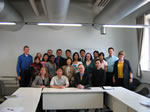
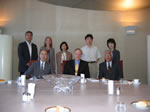 On May 21 during his 2008 trip to Tokyo and Kyoto, organized by the NSF Tokyo office, Dr. Bement traveled to the campus of Tokyo Institute of Technology (TIT) and met with 16 undergraduate students participating in the NanoJapan program sponsored by a NSF PIRE (Partnerships for International Research and Education) award, 0530220. His visit concluded with a lunch meeting with with the TIT's President Kenichi Igaand representatives of the NSF Tokyo office, Rice University, and the Tokyo Institute of Technology including NanoJapan host advisor Prof. Hiroo Munkata.
On May 21 during his 2008 trip to Tokyo and Kyoto, organized by the NSF Tokyo office, Dr. Bement traveled to the campus of Tokyo Institute of Technology (TIT) and met with 16 undergraduate students participating in the NanoJapan program sponsored by a NSF PIRE (Partnerships for International Research and Education) award, 0530220. His visit concluded with a lunch meeting with with the TIT's President Kenichi Igaand representatives of the NSF Tokyo office, Rice University, and the Tokyo Institute of Technology including NanoJapan host advisor Prof. Hiroo Munkata.
NanoJapan 2008 participants Amal El-Ghazaly is blogging about her experiences in Japan for the Carnegie Mellon University Undergraduate Admissions website. Follow along to learn more about what life is like for a NanoJapan participant.
>> Read Amal's Blog.
Sarah Phillips of the Rice University NanoJapan program gave a poster presentation at the 2008 NAFSA: Association of International Educators conference in Washington, DC. This poster was presented in the session on "Shaping the Future Through Work, Internships, and Volunteering Abroad (WIVA)".
>> Learn More About the 2008 WIVA Poster Session.
>> View Poster.
The National Science Foundation's Tokyo office (NSF-Tokyo) recently issued a Special Scientific Report on the NanoJapan program. Titled "Rice University NanoJapan Program: Connecting US Undergraduates with Leading Japanese Nanotechnology Research Laboratories " this report highlights the research collaborations and international exchange opportunities created by the Rice University NanoJapan program with collaborating labs in Japan. >> Read More.
Sixteen freshman and sophomore students from universities around the US have been selected as participants in NanoJapan 2008. These students will conduct research internships at leading nanotechnology research laboratories throughout Japan during the summer of 2008. To see the full list of selected participants and their research internship host sites please go to the Student Profiles page.
The NanoJapan program has been selected as the recipient of the 2008 Institute of International Education (IIE) Heiskell Award for Best Practices in International Education in the highly competitive study abroad category. NanoJapan has now been recognized among the "best practices" in internationalization, which IIE hopes will encourage and inspire other campuses. This year’s winning programs will each recognized at an Awards Luncheon on March 13 at the United Nations, as part of the 3rd Annual IIE Best Practices Conference.
>> Read More About the Heiskell Award.
>> Read More About the Best Practices Conference.
The online application for the NanoJapan 2008 program is now available. Applications will be accepted until February 8, 2008.
It is not uncommon for undergraduate engineering students to seek out research opportunities over summer break, nor is it unusual for them to take a few weeks to travel overseas. This summer, Austin Head, a junior biomedical engineering major with the Cullen College of Engineering, got to do both through the NSF-funded NanoJapan Program. >> Read More.
The Rice University Department of Electrical & Computer Engineering stays in step with industry dynamics and the evolving needs of affiliate members, identifying new ways to enhance the services and benefits of the Affiliates Program. During the 2007 ECE Affiliates Annual Meeting Prof. Junichiro Kono gave a presentation on "NanoJapan: Connecting US Undergraduates with the Best of Japanese Science & Research".
>> Learn More About ECE Affiliates.
>> View Presentation.
NanoJapan 2007 participants Yiming Wang and Nathan Brookswere awarded the Texas Instruments award for best NanoJapan Research Poster and Presentation at the RQI Summer Research Colloquium. Yiming received a $500 award and Nathan received a $250. Congratulations Yiming and Nathan!
>> Learn More About the RQI Colloquium
>> Learn More About 2007 RQI Award Recipients
Upon their return from Japan all sixteen NanoJapan 2007 participants presented posters on their research projects at the RQI Summer Research Colloquium on August 10, 2007. See the Student Profiles page of our website for more information on student research projects and to download PDFs of their RQI posters.
Sixteen freshman and sophomore students from universities around the US have been selected as participants in NanoJapan 2007. These students will conduct research internships at leading nanotechnology research laboratories throughout Japan during the summer of 2007. To see the full list of selected participants and their research internship host sites please go to the Student Profiles page.
Jaret Lee has been selected as a participant in the 2007 JETRO Japan International Internship Program (JIIP). Jaret, an Electrical Engineering major at Rice University, will spend the summer at Nippon Telegraph and Telephone Corporation working on characterization of micromirrors integrated with optical circuits and measurement of basic optical characteristics of micromirrors integrated with silica planar lightwave circuits. This is the last year of the JETRO-JIIP internships will be offered and NanoJapan is honored that one of our alumni were selected to participate.
>> Learn More About the JETRO JIIP Program
The online application for the NanoJapan 2007 program is now available. Applications will be accepted until February 22, 2007.
The National Science Foundation (NSF) has awarded the first grants in its Partnership for International Research and Education (PIRE) program. The grants range in size and duration, with most about $2.5 million over five years.
>> Read More.
Rice University has been awarded $2.2 million by the National Science Foundation (NSF) for a five-year project that will offer an integrated approach to international research and education in the area of nanotechnology.
>> Read More.